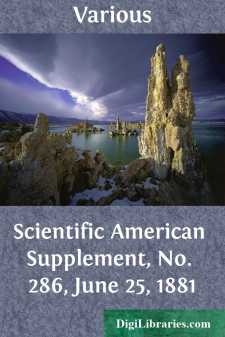Categories
- Antiques & Collectibles 13
- Architecture 36
- Art 48
- Bibles 22
- Biography & Autobiography 813
- Body, Mind & Spirit 141
- Business & Economics 28
- Children's Books 12
- Children's Fiction 9
- Computers 4
- Cooking 94
- Crafts & Hobbies 4
- Drama 346
- Education 46
- Family & Relationships 57
- Fiction 11826
- Games 19
- Gardening 17
- Health & Fitness 34
- History 1377
- House & Home 1
- Humor 147
- Juvenile Fiction 1873
- Juvenile Nonfiction 202
- Language Arts & Disciplines 88
- Law 16
- Literary Collections 686
- Literary Criticism 179
- Mathematics 13
- Medical 41
- Music 40
- Nature 179
- Non-Classifiable 1768
- Performing Arts 7
- Periodicals 1453
- Philosophy 64
- Photography 2
- Poetry 896
- Political Science 203
- Psychology 42
- Reference 154
- Religion 513
- Science 126
- Self-Help 83
- Social Science 81
- Sports & Recreation 34
- Study Aids 3
- Technology & Engineering 59
- Transportation 23
- Travel 463
- True Crime 29
Encyclopaedia Britannica, 11th Edition, Volume 3, Part 1, Slice 1 "Austria, Lower" to "Bacon"
by: Various
Categories:
Description:
Excerpt
AUSTRIA, LOWER (Ger. Niederösterreich or Österreich unter der Enns, "Austria below the river Enns"), an archduchy and crownland of Austria, bounded E. by Hungary, N. by Bohemia and Moravia, W. by Bohemia and Upper Austria, and S. by Styria. It has an area of 7654 sq. m. and is divided into two parts by the Danube, which enters at its most westerly point, and leaves it at its eastern extremity, near Pressburg. North of this line is the low hilly country, known as the Waldviertel, which lies at the foot and forms the continuation of the Bohemian and Moravian plateau. Towards the W. it attains in the Weinsberger Wald, of which the highest point is the Peilstein, an altitude of 3478 ft., and descends towards the valley of the Danube through the Gföhler Wald (2368 ft.) and the Manhartsgebirge (1758 ft.). Its most south-easterly offshoots are formed by the Bisamberg (1180 ft.), near Vienna, just opposite the Kahlenberg. The southern division of the province is, in the main, mountainous and hilly, and is occupied by the Lower Austrian Alps and their offshoots. The principal groups are: the Voralpe (5802 ft.), the Dürrenstein (6156 ft.), the Ötscher (6205 ft.), the Raxalpe (6589 ft.) and the Schneeberg (6806 ft.), which is the highest summit in the whole province. To the E. of the famous ridge of Semmering are the groups of the Wechsel (5700 ft.) and the Leithagebirge (1674 ft.). The offshoots of the Alpine group are formed by the Wiener Wald, which attains an altitude of 2929 ft. in the Schöpfl and ends N.W. of Vienna in the Kahlenberg (1404 ft.) and Leopoldsberg (1380 ft.).
Lower Austria belongs to the watershed of the Danube, which with the exception of the Lainsitz, which is a tributary of the Moldau, receives all the other rivers of the province. Its principal affluents on the right are: the Enns, Ybbs, Erlauf, Pielach, Traisen, Wien, Schwechat, Fischa and Leitha; on the left the Isper, Krems, Kamp, Göllersau and the March. Besides the Danube, only the Enns and the March are navigable rivers. Amongst the small Alpine lakes, the Erlaufsee and the Lunzer See are worth mentioning. Of its mineral springs, the best known are the sulphur springs of Baden, the iodine springs of Deutsch-Altenburg, the iron springs of Pyrawarth, and the thermal springs of Vöslau. In general the climate, which varies with the configuration of the surface, is moderate and healthy, although subject to rapid changes of temperature. Although 43.4% of the total area is arable land, the soil is only of moderate fertility and does not satisfy the wants of this thickly-populated province. Woods occupy 34.2%, gardens and meadows 13.1% and pastures 3.2%. Vineyards occupy 2% of the total area and produce a good wine, specially those on the sunny slopes of the Wiener Wald. Cattle-rearing is not well developed, but game and fish are plentiful. Mining is only of slight importance, small quantities of coal and iron-ore being extracted in the Alpine foothill region; graphite is found near Mühldorf....












